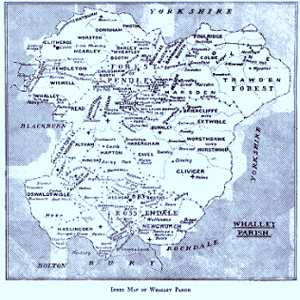The Witch Trials of Lancaster: A Deep Dive into Margaret Pearson’s Case
In August 1612, the shadow of witchcraft loomed large over Lancaster, England, as the infamous witch trials unfolded. Among the accused was Margaret Pearson, often referred to as the ‘Witch of Padiham.’ This case not only highlights the hysteria surrounding witchcraft during this period but also reveals the intricate web of local politics and personal vendettas that fueled these trials.
Context of the Trials
Lancaster was a hotbed of witchcraft accusations in the early 17th century, a time when fear and superstition ran rampant. The trials were often instigated by local authorities, such as Nicholas Bannister, a Justice of the Peace who played a pivotal role in questioning alleged witches alongside Roger Nowell. It is believed that Bannister may have been influenced by Nowell to pursue witchcraft accusations, leading to the trial of Pearson, who had already faced charges twice before—once for murder and once for bewitching a neighbor—yet had been acquitted on both occasions.
Charges Against Margaret Pearson
This time, Pearson was accused of killing a mare belonging to Mr. Dodgson of Padiham. The evidence presented against her was dubious at best. Notably, a fellow accused witch, Chattox, testified that Pearson possessed a cloven-footed spirit that had entered Dodgson’s barn and caused the mare’s death. Such claims were typical of the sensational testimonies that characterized witch trials, often lacking any substantial proof.

Another witness, Jennet Booth, recounted a bizarre incident involving a toad that allegedly appeared in Pearson’s home while she was warming milk. The act of removing a toad from one’s kitchen hardly constitutes evidence of witchcraft, yet it was enough to sway the court’s decision. Despite the flimsy nature of the evidence, Pearson was found guilty of witchcraft.
Punishment: A Harsh Sentence
Margaret Pearson’s sentence was severe. She was ordered to stand in the pillory in several towns—Clitheroe, Padiham, Whalley, and Lancaster—over four market days, wearing a sign that publicly declared her offense. This punishment was not merely a formality; it was a public spectacle designed to humiliate and deter others from similar transgressions. The physical toll of standing in the pillory for hours, exposed to the elements and the jeers of the crowd, was immense.
Moreover, Pearson was sentenced to a year in prison without bail and required to find sureties for her good behavior thereafter. The distances she had to travel between towns, coupled with the public humiliation, made her punishment particularly harsh. The pillory served as a grim reminder of the consequences of being accused of witchcraft, often leading to physical harm from the crowd, including being pelted with rotten food or worse.
Case of Isobel Roby
Another notable figure in the Lancaster witch trials was Isobel Roby from Windle, near St Helens. Her case, while less documented, reflects the broader societal tensions of the time. Roby was accused of bewitching her neighbors, with complaints arising from personal disputes rather than concrete evidence. The accusations against her were vague, often stemming from the aftermath of quarrels, leading to the belief that she had caused harm through witchcraft.
Under King James I’s revised laws, which had been enacted in 1604, the death penalty was prescribed for those whose witchcraft resulted in physical harm to others. Despite the lack of substantial evidence against her, Roby was found guilty and sentenced to death, illustrating the precarious nature of justice during this tumultuous period.
Conclusion: Witch Trials
The witch trials of Lancaster, particularly the cases of Margaret Pearson and Isobel Roby, serve as a stark reminder of the dangers of superstition and the often arbitrary nature of justice in the 17th century. These trials were not merely about witchcraft; they were deeply intertwined with local politics, personal grievances, and societal fears.
As we reflect on these historical events, it is crucial to recognize the impact of such trials on communities and the individuals involved. The legacy of the witch hunts continues to resonate today, reminding us of the importance of due process and the dangers of mass hysteria. Understanding these trials helps us appreciate the complexities of human behavior and the societal structures that can lead to injustice.

